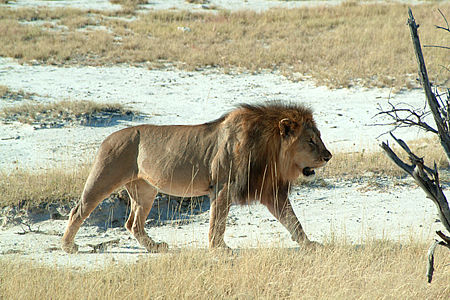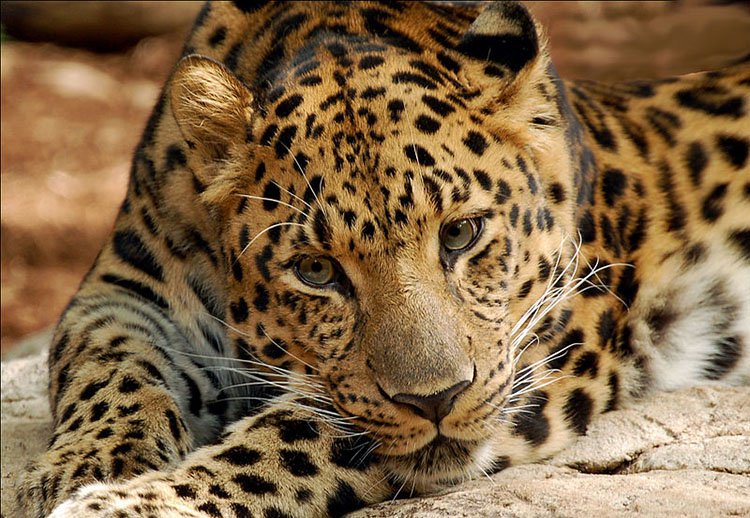
Planet Earth, home to millions and millions of different plant and animal species, is losing those species at a very alarming rate. Recently, we learned that the Earth is actually undergoing its 6th major mass extinction. While this is a completely natural cycle that the Earth goes through, it has been happening 114 times faster over the last century than what would be considered normal extinction rates, according to the journal Science Advances. This leads many people to believe that our actions are directly affecting this cycle.
“Our activities are causing a massive loss of species that has no precedent in the history of humanity and few precedents in the history of life on Earth,” lead researcher Gerardo Ceballos told Live Science.
An alarming statistic from National Geographic shows that almost 41% of all amphibians are facing the threat of extinction; this threat is also quite significant for mammals and birds.
Of course this post is less helpful when we don’t have an action step, so here’s a place you can donate to who is working to help situations like these.
1. Rabbs’ Fringe Limbed Treefrog

While this frog was only discovered in 2008, it had made the list of critically endangered species by the International Union for Conservation of Nature by 2009. A few years ago, Zoo Atlanta had to euthanize one of the two (that’s right, two) remaining frogs because of a huge decline in health. They wished to not only cease the dying frog’s further suffering, but to preserve its genetic material for future study.
2. Mangarahara Cichilids

In 2013, it was believed this species of fish was left with only 3 males, but luckily the Zoological Society of London was able to find 18 more. They are now doing everything they can to protect this species.
3. Yangtze Giant Softshell Turtle

According to the Wildlife Conservation Society, there are only four Yangtze Giant Softshell Turtles left in the world. There are a number of wildlife conservation groups currently working together to keep the world’s most threatened turtle species alive.
4. Madagascar Pochard

According to the British Broadcasting Corporation, there are only 25 Madagascar Pochards left in the wild. A study done by Wildfowl and Wetlands found that 96% of all chicks that hatch are dying at just two to three weeks old. They are dying because human activity has driven the birds to only one remaining wetland which has insufficient food for the chicks.
5. Northern White Rhino

Poachers, unfortunately, have hunted the Northern White Rhino to near extinction all over Africa. Many believe that the horn of the rhino is more lucrative than drugs. The last of its species is now under constant surveillance.
6. Hainan Gibbon

The Hainan Gibbon ape is a critically endangered species, the remaining 30 or so can be found in the rain forests of China’s Hainan Island. The island used to inhabit around 2,000 of these apes, but again, thanks to poachers and loggers, this number has drastically declined in just 30 years.
7. Javan Rhino

Only 57 Javan White Rhinos remain, all of them in Java, Indonesia. These rhinos were poached excessively for their horn, which is used in traditional Indonesian medicine. As one of the most rare species of rhino on Earth, the World Wildlife Fund is doing everything they can to save them.
8. Vaquita Porpoise

It is so sad to report that, according to National Geographic, there are only 97 of these beautiful whales left in the world. Porpoise whales are very closely related to dolphins and equally as cute! These precious whales have been getting caught in fishing nets in the Gulf of California for decades. Luckily, there is hope. Of the 97 whales left in the world, 25 are females of the reproductive age; there is a chance the species will be saved.
9. Amur Leopards

Sadly, according to the World Wildlife Fund there are only 60 Amur Leopards left in the world. Again, poaching is the culprit. These extremely rare leopards are prized in Russia for their beautiful spotted fur, which is usually sold for around $1,000 – hardly an exorbitant amount for something so rare and so precious. One would think the very fate of a species would be worth more to people.
10. Hula Painted Frog

Interestingly, in 1996 the Hula Painted Frog was believed to be extinct, as it had not been seen by anyone for over 40 years. Scientific American actually reported that it was the first modern day amphibian to be declared extinct by the International Union for Conservation of Nature. But this spotted frog made a surprising comeback in 2011 when it was found by a park ranger in Israel. Since this discovery, 13 more have been found.
11) Leatherback Turtle (Dermochelys coriacea)

Leatherbacks are the largest of all sea turtles, measuring as long as eight feet and weighing as much as 2,000 pounds. They are also the deepest divers, plunging to depths as great as 1,200 meters as they hunt for jellyfish. Leatherbacks are distributed in the Atlantic, Pacific and Indian Oceans, as far north as British Columbia and as far south as Argentina. They migrate between continents, making both transatlantic and transpacific journeys between feeding and nesting sites. Populations have crashed over the last two decades—the result of poaching for egg and meat consumption, destruction of nesting sites from beachfront development, disorientation of hatchlings from the artificial lighting created by those developments, accidental capture by commercial fisherman and other factors. In 1980 the global population of nesting females was estimated at 115,000. Now that number has dropped to between 26,000 and 43,000 (ScientificAmerican)
12) Pied Tamarin (Saguinus bicolor)

Often called the "bare-faced tamarin" for its hairless face and ears, the pied tamarin inhabits only a small area of land surrounding Manaus, a city of two million in northwestern Brazil. Urban expansion, cattle ranching and agriculture have eroded much of the tamarin's rain forest home, which extends no farther than 40 to 50 kilometers from Manaus. Worse, the monkeys are being out-competed by their close relative, the golden-handed tamarin, in areas where the two species overlap. (ScientificAmerican)
13) Black Rhinoceros (Diceros bicornis)

Black rhinos, like their larger white cousins, are actually grayish in color. Their horns are highly valued for use as ornaments and for their "medicinal" properties, even though they are simply made of keratin, the same protein found in fingernails and hair. At the start of the century there may have been hundreds of thousands of Black rhinos roaming Africa but now there are only few thousand. Among the four Black rhino subspecies, the west African is the most threatened and may have already gone extinct in the wild. Poaching and habitat loss continue to threaten the species's survival. (ScientificAmerican)
14) Lion

“The African lion – a symbol of majesty, courage and strength – faces serious threats to its long-term survival,” Dan Ashe, director of the U.S. Fish and Wildlife Service, said in a statement. “Listing it as a threatened species will bring the full protections of U.S. law to lion conservation, allowing us to strengthen enforcement and monitoring of imports and international trade.” (IBtimes)
15) Polar Bear

Polar bears have evolved something else that is different from their ancestor brown or grizzly bears: most polar bears don’t den, however all brown or grizzly bears do. When grizzly bear food is covered in snow during the winter, this species must den because there is nothing to eat. In contrast, most polar bears have access to their food of seals all winter long, so there is no need for them to den. The exception to this is pregnant adult females. Pregnant female polar bears must den so that their tiny newborn cubs are born in a warm protected environment; the cubs would freeze to death in the frigid temperatures of the far north if they weren’t born in dens. Sustained by their mother’s milk in warm dens during long winter months, they emerge in the spring large enough to survive with the help of their mother. Teaching her cubs to survive long enough to survive by themselves, however, will take the mother polar bear another two years and sometimes longer. (NWF)
Based on Collective Evolution
Related:
- Everything You Think You Know About Animals Is Wrong
- 22 Bizarre Animals You Probably Didn't Know Exist
- Here Are 24 Awesome Things You Didn't Know About Animals. #11 Just Made My Week.
- 40 Animals You May Not Have Known Existed
- New Zealand Now Recognizes ALL Animals As Sentient Beings!
- Costa Rica Becomes The FIRST Nation To Ban Hunting!
- India Declares Dolphins "Non-Human Persons", Dolphin shows BANNED.
- Circus Lion Freed From Cage Feels Earth Beneath His Paws For First Time
- Elephant Cries Tears Of Joy After Being Released From 50 Years Of Captivity
- Disturbing Aerial Photos Show What Killing Billions Of Animals For Meat Is Doing To The Environment
- What if Animals Treated Us How We Treat Them?
- 11 Thought Provoking Images Show What Humans Are Really Doing To The Planet
- You Will Want To Recycle Everything After Seeing These Photos!
- This Film Should Be Seen By The Entire World!
- Seed Bombers Can Plant An Entire Forest of 900,000 Trees A Day!
- Shocking Effects Of Deforestation Exposed In Brutal Print Ads
- Ecuador Just Set The World Record For Reforestation!
- Bolivia Gives Legal Rights To The Earth
- This Indian Man Planted an Entire Forest by Hand
- How India is Creating 300,000 Jobs AND Planting 2 Billion More Trees
- Everything Wrong With Humanity, In A Short Animated Film
- These 29 Clever Drawings Will Make You Question Everything Wrong With The World
- The Earth is a Sentient Living Organism
- Earth is Alive! Beautiful... Finite... Hurting... Worth Dying for!
- 4 Minutes That Will Change Your Life
- Possibly the Most Eye Opening 6 Minutes Ever on Film
- Gray whale dies bringing us a message — with stomach full of plastic trash
- Longest Floating Structure In History Sets Out To Clean The Ocean In 2016!
- Floating Seawer Skyscraper Rids The World’s Oceans Of Plastic While Generating Clean Energy
- Paradise or Oblivion (Documentary) - The Venus Project













COMMENTS